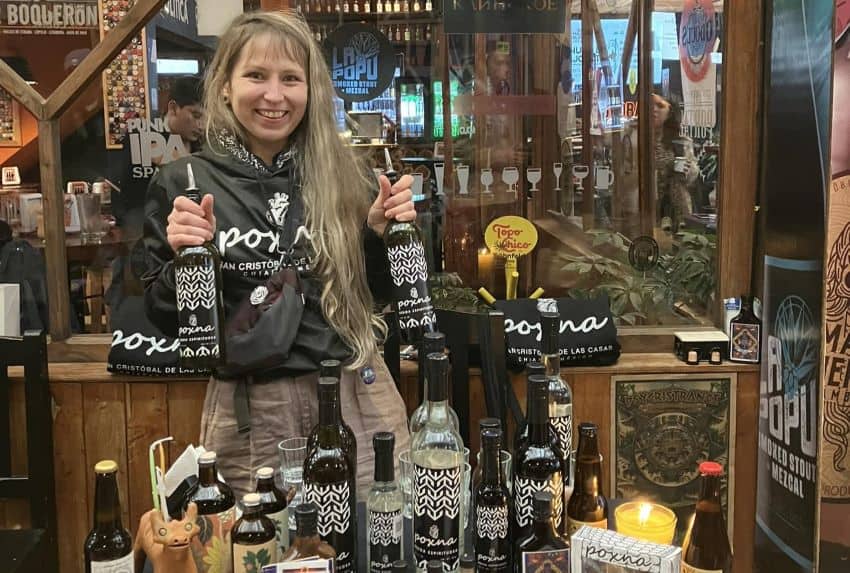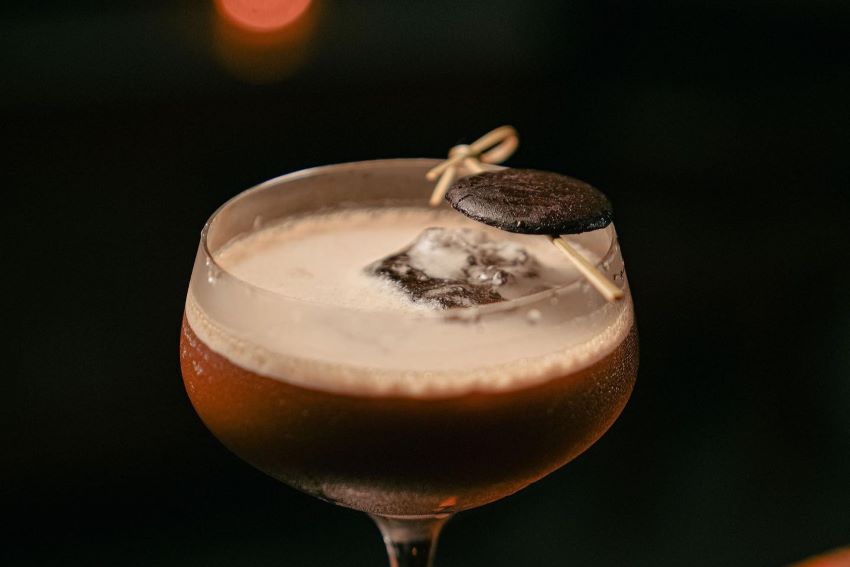How Poxna is reviving tradition

A renaissance of Mexican spirits, resulting from the current mezcal boom both here and across the border, has meant that the nerdiest of spirit lovers are looking even further afield for traditional distillates reflecting Mexico’s vast variety of flavors. If you’ve frequented bars in major Mexican cities lately or have spent any amount of time in the southern state of Chiapas, you may have seen pox, sometimes written posh, on the menu.
Pox, a distilled spirit whose origins go back centuries, is so much more than just an element for a great cocktail.
A brief history of Pox
Historically, pox’s original ancestors were the fermented beverages of the indigenous communities of Chiapas. It was made from either corn or sugar cane and referred to as pox or chicha.
Pox’s modern descendant has been used for centuries in local religious ceremonies and community celebrations, where it was valued for its curative properties and ability to transport shamans or healers into a trance-like state. It was also often exchanged as a form of payment and was one way that the mestizo upper classes controlled their day laborers – paying them in pox and then trapping them in a vicious circle of indebtedness when they became addicted.
In 1949, a prohibition on pox and other kinds of liquor was enforced in Chiapas, closing small distilleries around the state in an attempt to supposedly protect the local population from alcoholism. The prohibition, however, only served to strengthen the pox monopoly at the time of the Petrero brothers, who, in cahoots with local law enforcement, brutally attacked indigenous distillers producing clandestinely for their own consumption. The pox monopoly wasn’t truly dismantled until the 1970s, and from then until the early 2000s, the spirit returned to small production and was used mainly for religious and community purposes. It wasn’t until a new generation of distilleries came along that pox started to become popular again in the mainstream.
These days, pox is slowly creeping down from the highlands of Chiapas to appear on bar menus across the country. Only a handful of official pox brands have hit the market – Pox Tres Almas, Pox Siglo Cero, Poxmyl, La Poshería, and Poxna – among them.

Meet Sofia Vidal, the woman bringing pox back to Chiapas
Poxna is the only pox brand that is female-owned and operated, by Chiapas local Sofia Vidal. Vidal started her project in 2010 with the goal of not only creating great pox but also educating consumers about the historical and cultural importance of this local spirit.
“I wanted to make a spirit in Chiapas that people could feel proud of and that could be much more than just an alcoholic beverage. Something that we could return to producing and understand the need to recover the original artisanal process of making this spirit,” Vidal says.
“On one hand, it’s a popular drink for parties, but it also has a role that’s very traditional, very ceremonial, full of mysticism. It is still part of the ritual elements of traditional ceremonies of the native peoples in the central part of Chiapas, mainly the Tzotzil and Tzeltal, the two largest indigenous groups in Chiapas.”
The word for pox in Tzotzil, poxyl, literally means medicine, and the liquor is still used by local healers and shamans to cleanse the soul, heal the heart, and ward off evil spirits. It is also employed to extract the medicinal properties of local herbs and plants.
Vidal remembers her mother and her aunts using pox to create a local fruit liqueur called mistela with traditional fruit from the area like peaches or quince, but they would have never drank it straight. That’s because for most of its existence in modern times, pox has been considered a poor man’s drink, sold for cheap in local shops but not taken seriously as a drink for more affluent circles.
There is currently no Denomination of Origin for pox like there is for mezcal, tequila, and some other Mexican spirits, which means that the exact parameters of what can be considered pox are hazy. According to Vidal, many brands are selling what is essentially a sugar cane aguardiente and calling it pox.
For her, the essence of pox is corn.

Pox is a distillation of Mexican history
“Corn, as you know, is one of Mesoamerica’s most important grains. In Mexico — and especially Chiapas — its influence is important as the foundation of our cuisine, and we want to continue preserving it. Something very clear to me from the very beginning was that our pox needed to be made with corn.”
Understanding that it would be more expensive and take more time, Vidal decided planting and using local corn was vital to her young project. She started working with Bebidas Espirituosos de Chiapas, a local organization dedicated to the research, history and preservation of traditional spirits. They helped Vidal carry out the initial tests to see which of five different varieties of local corn would make the best final product. Once that was decided, they helped her standardize production.
All of Poxna’s products are made from a base of local white corn that grows in the area of Comitán, southeast of San Cristobal de las Casas. Vidal works closely with farmers at each step of the growing process until the corn is ready to be processed.
They then make a first distillation from corn mash and a separate one from a mixture of piloncillo (a type of brown sugar) and wheat bran. These two spirits are then blended together and distilled a second time to create a white pox that is 70% corn liquor.

The end result is a 45ABV “extra-virgin pox,” according to Vidal, with a silky texture and dry notes from the corn as well as a slight sweetness added by the piloncillo. Poxna is also making pox infused with hibiscus and chocolate pox, more like a cream than a straight spirit but without any dairy.
“It’s really difficult for someone to buy a spirit they have never tried,” Vidal says, which is why she started giving tastings at her shop/bar/restaurant in Chiapas, La Espirituosa. Anyone who stops in can get a free tasting and explanation of pox.
Vidal finds that many of her clients immediately compare pox to mezcal and tequila and generally like it better because of the lack of smokiness and the slightly lower alcohol content, which makes it smoother. She is a strong proponent of the standardization of pox production and hopes that one day, this spirit will have a similar impact to tequila and mezcal.
While she prefers to focus on her project and less on the gender discussion, she says it can be tough to be the woman in charge. “I did a tasting for industry people and invited the son of the farmer I work with. I performed the tasting and gave the explanation, but at the end, all the questions were directed toward him. At one point, I just had to interrupt and say [that] if they had questions about my product, they should be asking me.”

Poxna: Coming soon to a cocktail bar near you
Despite having to remind folks that she knows what she’s doing, her bullishness about pox has made Vidal a rising name in the industry She’s built a strong network around Poxna and its products.
In Mexico City, Poxna can be found on the cocktail menus of many prestigious food and drink establishments, such as Baltra, Limantour, and Pujol, and at chef Enrique Olvera’s project, Criollo, in Oaxaca.
This mystical spirit has long been important in the state of Chiapas, but now the rest of the country — and the rest of the world — is starting to take notice.
Lydia Carey is a freelance writer and translator based out of Mexico City. She has been published widely both online and in print, writing about Mexico for over a decade. She lives a double life as a local tour guide and is the author of Mexico City Streets: La Roma. Follow her urban adventures on Instagram and see more of her work at www.mexicocitystreets.com.
Source: Mexico News Daily

